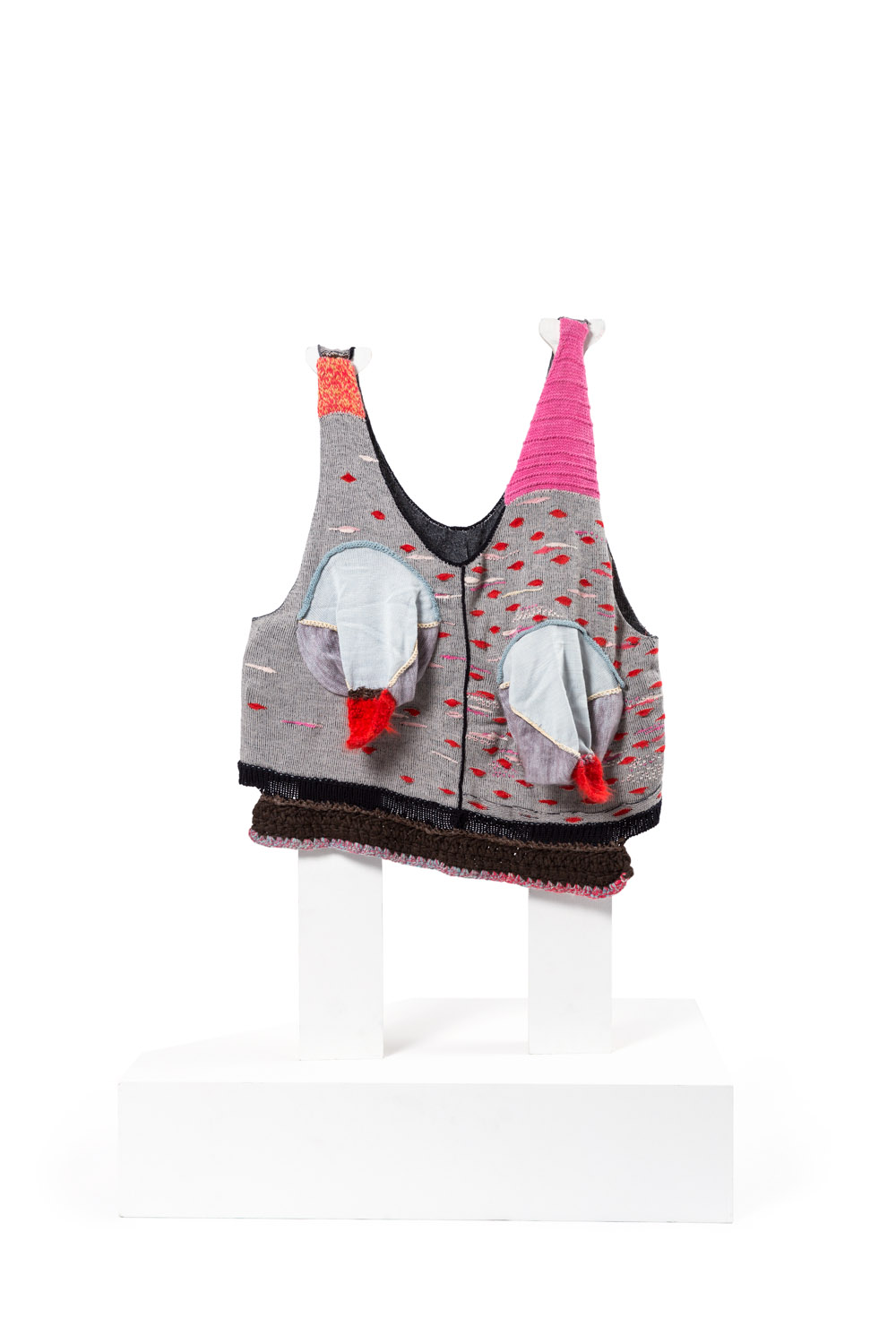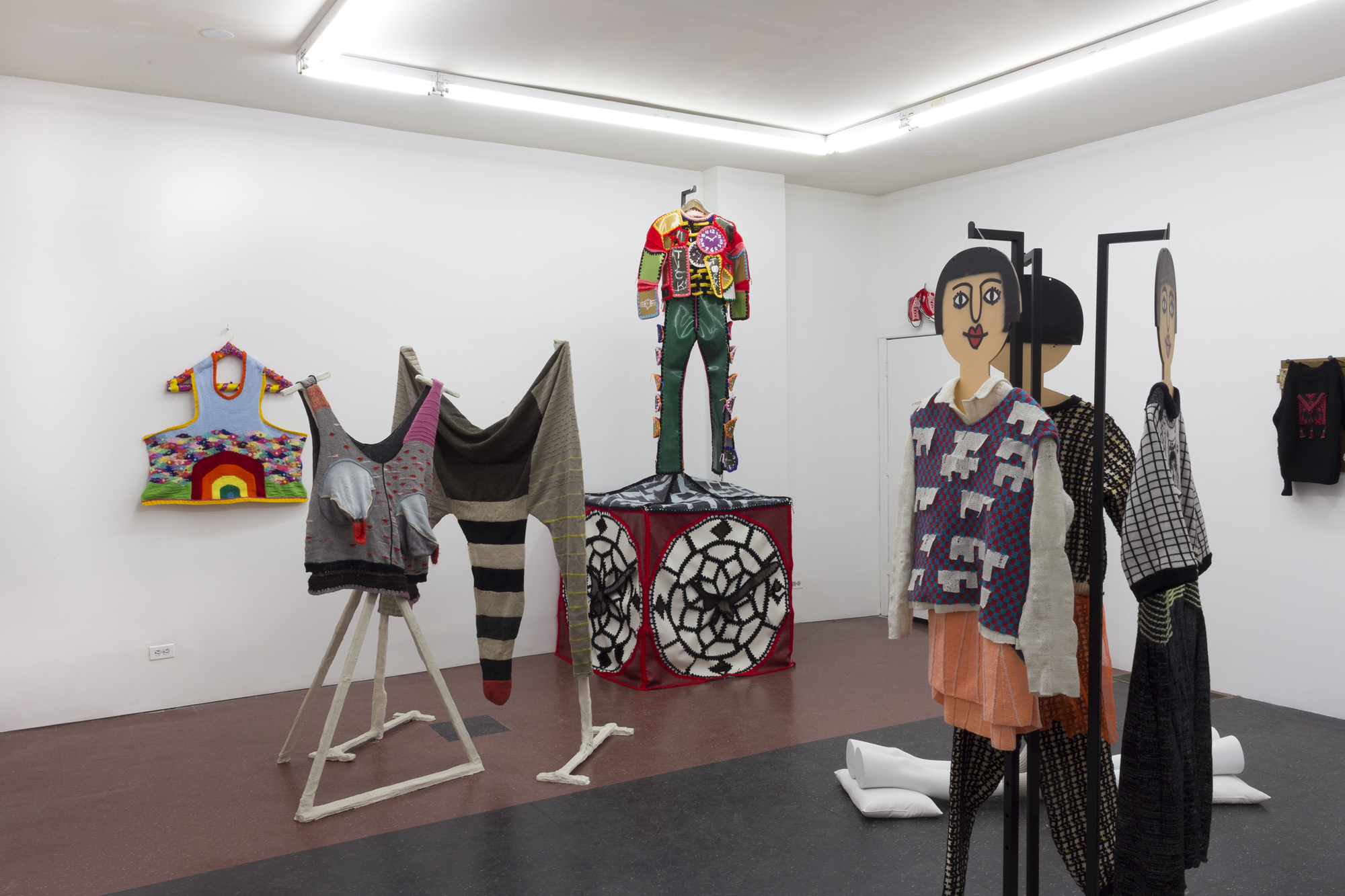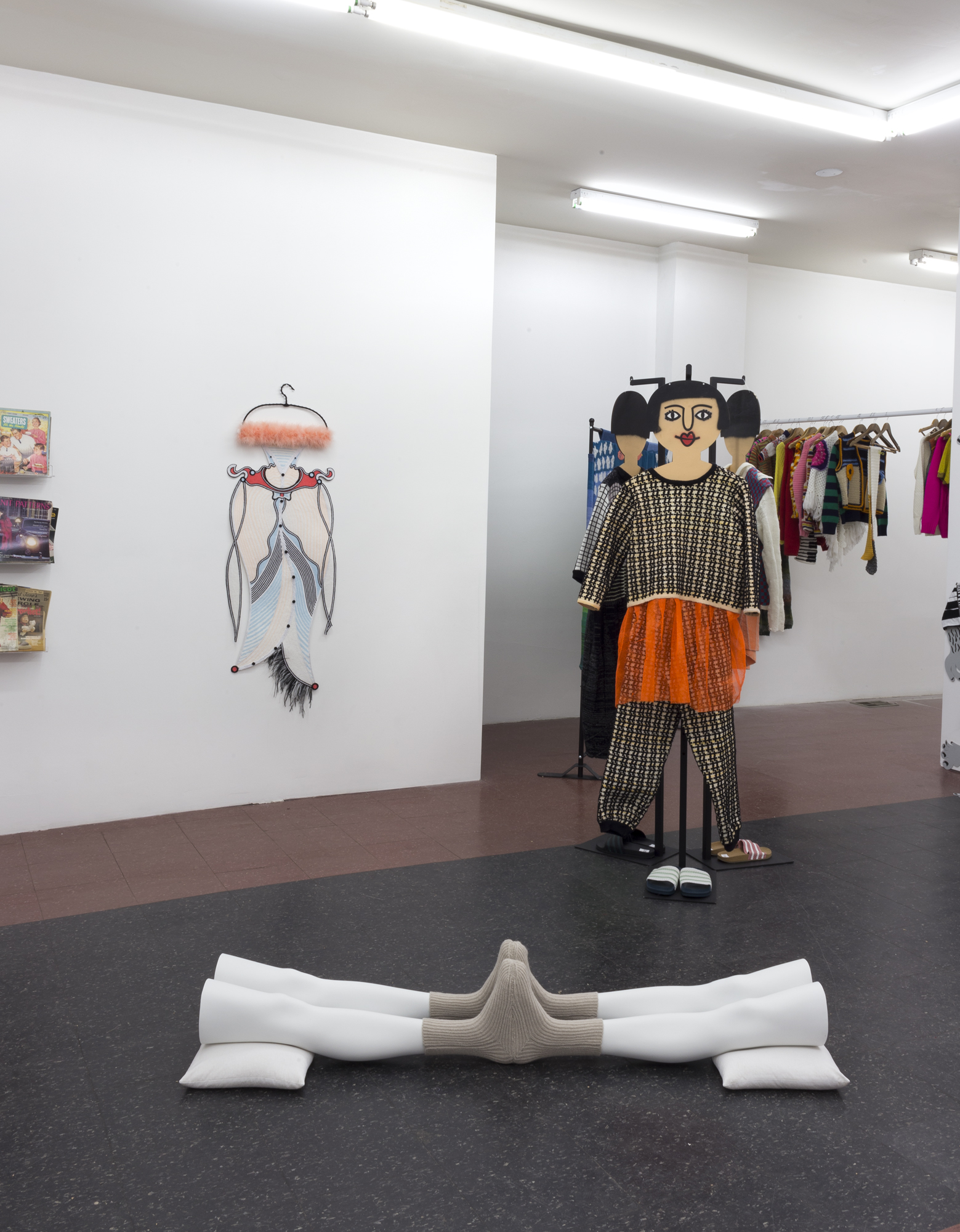Opening reception: Friday, December 13 from 6 - 9 pm

At its most primitive, knit fabric is a simple arrangement of loops created with two needles and a length of yarn. Its uniform geometry makes it not only practical and adaptable to a standardized version of the human body, but ideal for mass production and therefore ubiquitous in contemporary dress. Unlike materials created through weaving, lacemaking, or felting processes, virtually any type of fiber that can be spun into yarn can be knitted into an elastic, three-dimensional garment. Knits can be cheap, durable, washable, wrinkle-resistant, and breathable. Most importantly they are stretchy, which eliminates the need for zippers, buttons, or other itchy fasteners and enables them to conform to the modern body, easily accommodating a variety of lumps, bumps, and practical movements.
Adaptable and omnipresent, knit garments make us chameleons. As they collect the imprints of our dynamic bodies, they become nonverbal, detachable identities that reliably cinch and hoist our flesh. A woman proudly brandishes a pair of discolored stretch pants declaring, “Can you believe I wore these through three pregnancies and they were only five dollars at TJMaxx?!” Spandex is her trophy, a saggy, resilient hole-in-the-crotch symbol of her sacrifices.
Soft Body celebrates the mundane yet extraordinary qualities of modern commercial knitwear, but is more interested in potential than actuality. In contrast to the one-size-fits-all “fast fashion” system of manufacturing, the pieces on display are one-of-a-kind and provocatively impractical – fit for impossible bodies, fictional rituals, and ludicrous tastes.
Through drastic shifts in scale and proportion, through the augmenting and cartooning of limbs, the queering of gender norms, the undermining of beauty standards, and the disabling of conventional human function, the unoccupied works playfully envision the bodily, psychological, and social peculiarities of imagined wearers. Just as the trauma of catching one’s own reflection in the wrong light generally suffices to remind us of our own bodily delusions, the show’s garments disrupt our automatic intimacy with clothing. They draw us into interactions both tangible and imaginary, inviting us to revise our notions about bodies and to invent our own fantasy skins.




